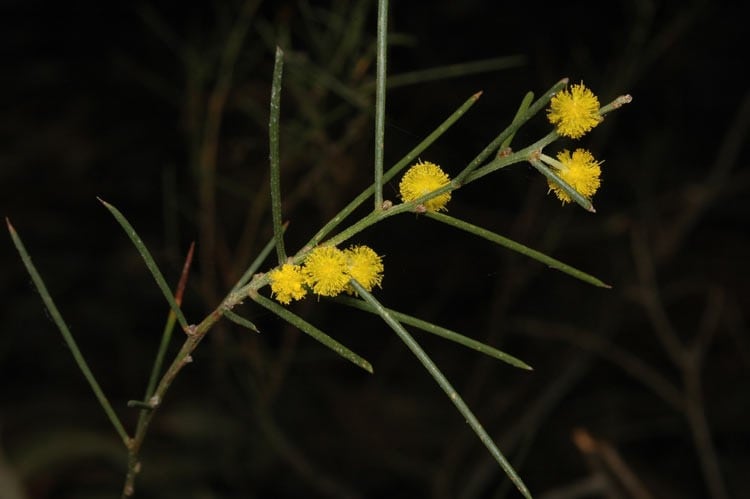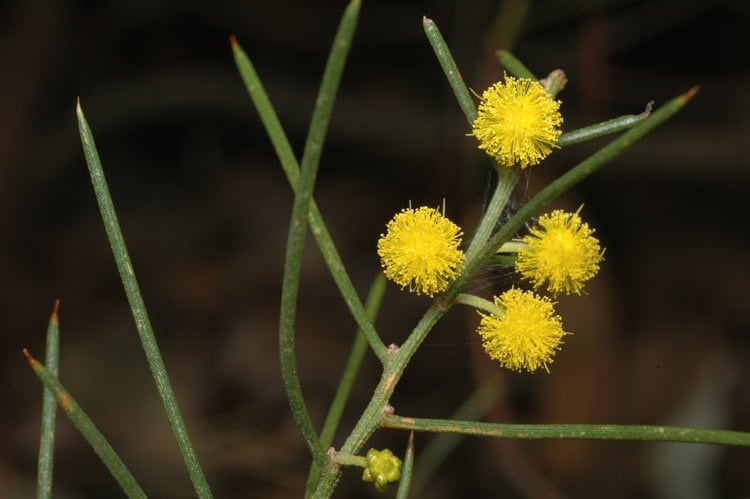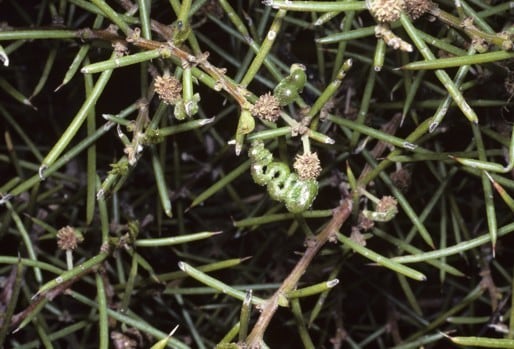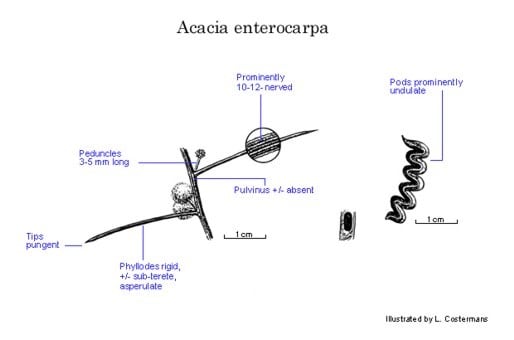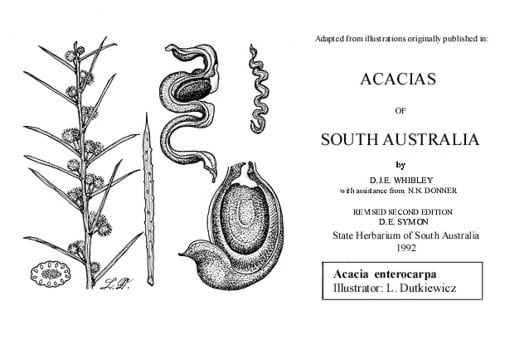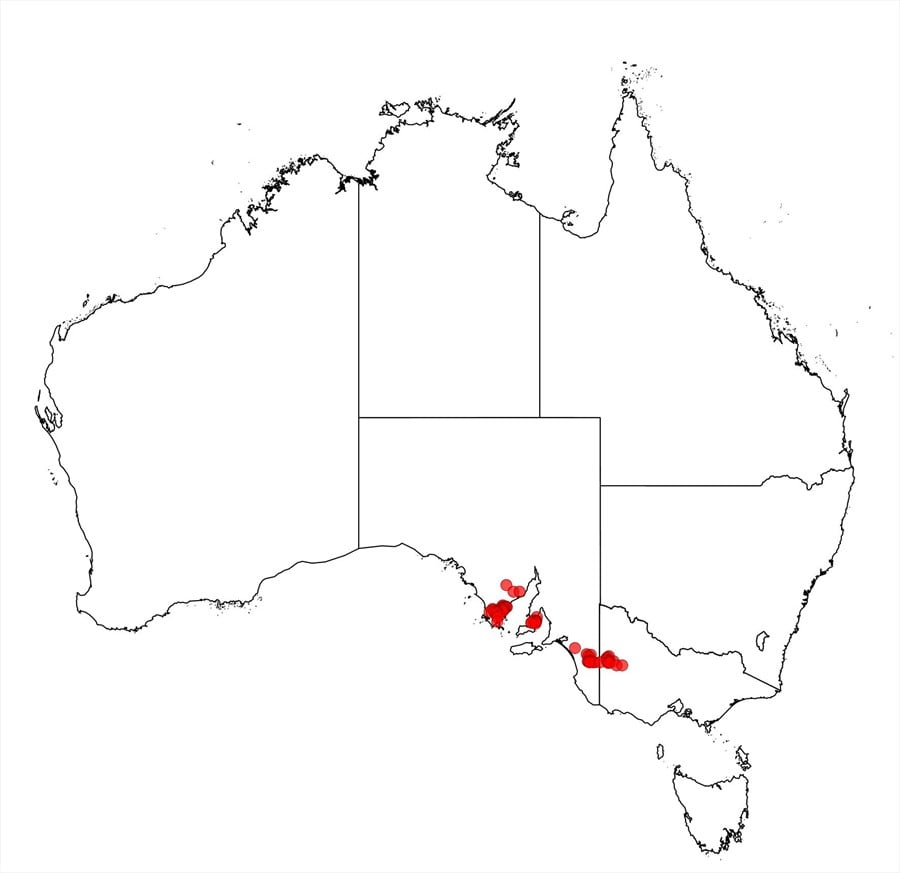Acacia enterocarpa R.V.Sm.
WATTLE
Acacias of Australia
Common Name
Jumping Jack Wattle
Family
Fabaceae
Distribution
Occurs in southern S.A. on the southern Eyre Peninsula, Yorke Peninsula (about Curramulka) and near Bordertown extending to Nhill, western Vic.
Description
Dense spreading shrub to 1.5 m high. Branchlets asperulate, reddish brown, ribbed. Phyllodes subsessile, patent to inclined, straight to shallowly recurved, subterete to compressed, (1.5–) 2–4.5 cm long, 1–1.3 mm wide, pungent, rigid, glabrous, asperulate, sometimes viscid, with 10–12 distant raised asperulate nerves; gland basal. Inflorescences simple, 1–4 per axil; peduncles 3–5 mm long, somewhat thick, appressed-puberulous; heads globular, 3.5–4.5 mm diam., ±20-flowered, bright yellow. Flowers 5-merous; sepals free. Pods undulate, to ±2 cm long, 2 mm wide, coriaceous, brown with thickened yellow margins, sparsely appressed-puberulous. Seeds longitudinal, oblong to elliptic, ±3 mm long, dull, dark brown to black; aril apical.
Habitat
Grows in a variety of soils, in open forest and woodland.
Specimens
S.A.: c. 5 km SW of Port Neill on Lincoln Hwy, D.J.E.Whibley 1955 (NSW, PERTH). Vic.: Sandsmere Flora Reserve, A.C.Beauglehole 84088 (PERTH).
Notes
Closest to A. hexaneura which has persistent, spinose stipules, longer, 6-nerved phyllodes and less contorted pods. Also seemingly related to A. nyssophylla and A. colletioides but differing from both by its asperulate-ribbed branchlets and phyllodes, as well as by its strongly plicate pods having seeds with smaller, whitish arils.
While the phyllodes lack a clearly defined pulvinus, there is a pad of yellowish tissue at their base which might be interpreted as pulvinar; consequently they are described as subsessile.
FOA Reference
Data derived from Flora of Australia Volumes 11A (2001), 11B (2001) and 12 (1998), products of ABRS, ©Commonwealth of Australia
Author
R.S.Cowan, B.R.Maslin
This identification key and fact sheets are available as a mobile application:
URL: https://apps.lucidcentral.org/wattle/
© Copyright 2018. All rights reserved.

